| Siemens AG (SIE) C651 | |
 |
|
| In service | May 1995 – Present |
| Manufacturer | Siemens AG |
| Constructed | 1993 – 1994 |
| Number built | 114 Vehicles (19 trainsets) |
| Formation | 6 cars per trainset DT–M1–M2–M2–M1–DT |
| Fleet number | 201/202 – 237/238 |
| Operators | SMRT Trains |
| Depot(s) | Bishan, Changi, Tuas and Ulu Pandan |
| Line(s) served | North South Line & East West Line |
| Technical Data | |
| Car body | Stainless steel |
| Doors | 8 per car |
| Electrification | 750 V DC Third rail |
| Track gauge | Standard Gauge (1435mm) |
The Siemens C651 is an electric multiple unit (EMU) train operating on the North South Line (NSL) and East West Line (EWL). Entering service in 1994, these were the second generation of rolling stock, purchased ahead of the opening of the NSL’s Woodlands Extension in 1996.
Nineteen trainsets comprising six cars each were procured. They were manufactured from 1993 to 1994 by Siemens AG in Vienna, Austria.
From 2016, mid-life upgrading works were carried out by Singapore Rail Engineering, a subsidiary of SMRT Corporation. The mid-life upgrading programme was subsequently terminated in September 2018. (Related Article: SMRT stops Mid-life Upgrading of C651 Trains)
Background
Contract 651 (C651) for the supply of 19 additional trainsets for the Singapore MRT network was initiated ahead of the opening of the Woodlands Extension along the North-South Line, which connected Yishun and Choa Chu Kang stations via Woodlands.
Awarded to Siemens Aktiengesellschaft (Siemens AG) at a cost of S$259 million, these trains were built in Austria. Each 6-car train is actually two 3-car trainsets coupled together, each comprising of a Driving Trailer (DT) and two Motor Cars (M1 and M2). The first unit was delivered to SMRT on 20 September 1994, and the last unit was handed over on 9 February 1996, one day before the opening of the Woodlands Extension.
Each train carries a price tag of around S$13.6 million, as compared to S$9 million for the C151 train in 1984, a figure partially attributed to inflation.
Technical Information
On the exterior, trains are coated in a scratch-resistant acrylic painted exterior finish, in contrast with the aluminium shot-peened surface of the older C151 trains. Interior specifications, however, are similar.
A significant feature introduced on these trains are the Alternating Current (AC) variable-voltage, variable-frequency (VVVF) inverter propulsion system with three phase induction traction motors. They are more energy efficient that the Direct Current (DC) motors used in C151 trains, which incorporate a chopper control system and regenerative braking. As the AC VVVF system allows for higher recovery of regenerative energy due to increased extended braking range, net energy consumption was lowered. Maintenance of the AC system was also simplified with fewer components involved.
Other technical improvements are:
- Air-conditioning vents made of glass-reinforced plastic which eliminates formation and dripping of condensate from aircon vents in train cars
- Event recorder (“black box”) which captures important parameters such as acceleration and braking data, beneficial in providing data for operation and maintenance improvements
- Improved public address system which automatically adjusts the volume level to compensate for background noise
History
These trains entered revenue service on 2 May 1995, one year ahead of the North South Line (Woodlands Extension). The exterior was coated in scratch-resistant paint; a white base coat and a central red stripe running the length of the train. On the interior, each car featured a different colour scheme, namely orange, blue and green from each end to the middle cars.
In a past experiment, two rows of seats in the middle of the car were replaced with upholstered bum rests. The move was unpopular and the seats were reinstalled by 2006. In 2007, triple-branched stanchion poles were installed.
From 2009 onwards, the SMRT Active Route Map Information System (stylised as STARiS) was progressively installed on all C651 trainsets, consisting of 4 Vacuum Fluorescent Displays (VFD) mounted near the ceiling and 8 active route maps mounted above every door in each car. In 2014, two additional rows of hand grips were installed throughout the train.
Between 2014 and 2015, all C651 trains were upgraded with Thales SelTrac Communications-Based Train Control (CBTC). Additional signalling equipment was installed at both ends of every train, replacing 2 seats at each end with a signal box.
Refurbishment
Main Article: SMRT stops Mid-life Upgrading of C651 Trains
Mid-life refurbishment works were carried out between 2016 and 2018 by Singapore Rail Engineering, beginning with set 217/218. New IGBT-VVVF Permanent Magnet Synchronous Motors (PMSM) from Toshiba would replace the old GTO–VVVF PWM traction system from Siemens, reducing power consumption by 30%, noise levels by 12 dB and being easier to maintain. In addition, major systems such as propulsion, air-conditioning and auxiliary power systems will be replaced or refurbished. The trains will also be repainted in white with yellow, red and black stripes, mirroring SMRT’s new livery previously applied on its buses and taxis. On the interior, the trains were virtually rebuilt with new interior fittings, wider seats and electric doors. An upgraded STARiS (version 2.0) features a large LCD panel that replaces the older active route map that uses LED lamps.
However, on 16 September 2018, SMRT confirmed that it was discontinuing the ongoing mid-life upgrading (MLU) works being carried out on Siemens C651 trains. Several reasons were cited by SMRT to the termination of the C651 MLU, including the transition to the New Rail Financing Framework (NRFF) in 2016 and recent changes in SMRT Corporation’s management structure.
Current Design
All C651 trains are comprised of six cars with open gangway connections between all cars. Each car has eight doors, four on each side. The interior features longitudinal seating in three colors: orange, blue and green from the end cars to the middle cars. Priority seats are located in every car, near the doors. All trains are equipped with STARiS, SMRT’s active route information system comprising ceiling-mounted textual displays and active route maps above every door.
Emergency Exits are located at both ends of every train, with a ramp that can be deployed in an emergency. Within the cabin, Emergency Communication Buttons are located at the side of the train doors, enabling passengers to speak with staff in an emergency. Fire extinguishers are also placed in every car.
Train Formation
A six-car trainset is formed of two three-car sets permanently coupled together. Each set comprises one driving trailer (DT) and two motor cars (M1 and M2). As such, the running configuration of a C651 trainset is DT–M1–M2–M2–M1–DT.
Every car is identified by a four digit number ranging from x201 to x238, where the first digit x is carriage identifier. The driving cab is 3, followed by the second car using 1 and the third car using 2. The last three digits refer to the 3-car trainset of which the train is comprised of. SMRT’s 19 trains are actually 38 3-car trainsets coupled together in an even-odd arrangement, i.e. Set 201/202, Set 203/204 and on to Set 237/238.
As such, a sample Set 201/202 will contain the carriage numbers 3201-1201-2201-2202-1202-3202. Depending on the direction of travel, the sequence may be reversed. On rare occasions, trainsets may be cross-coupled.
Decommissioning of Trains
See Also: Decommissioning of C651 trains
In September 2020, photos of a C651 Siemens Train (Carriage 3204 from train set 203/204) were posted on Twitter by user @Tx_2171F, outside the premises of Toyotron Pte Ltd.
Toyotron Pte Ltd was the appointed contractor under Contract R151D – Disposal of Decommissioned Trains. (See Also: Decommissioning of First-Generation NSEWL Trains (CR151D))
The refurbished C651 trains were also scrapped at the same location.
Preservation
Train cars 3229, 1229, 1230 & 3230 (from Set 229/230) were preserved by the Singapore Police Force for training purposes. The remaining units from this set (car 2229 & 2230) were sent to the scrapyard.
Gallery:
External Links & References
- Siemens C651 – Wikipedia
- Siemens C651 (SIE) – SGTrains
- Woodlands MRT line – NLB
- テレンス@Essential Worker™ @Tx_2171F – Twitter
Back to Trains
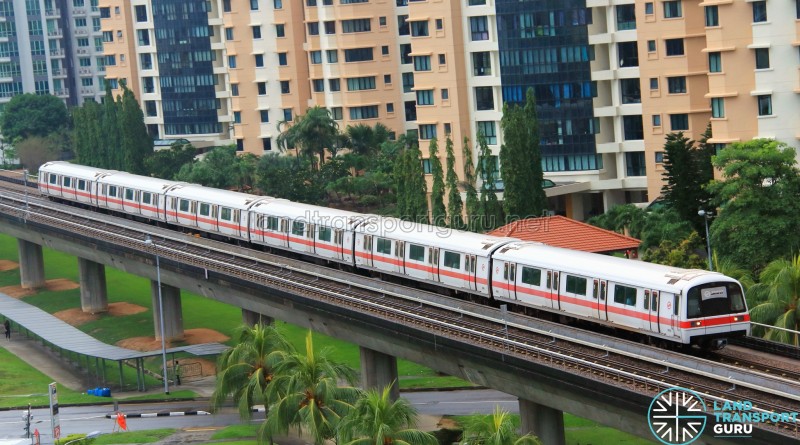
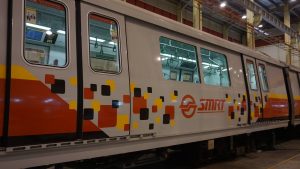
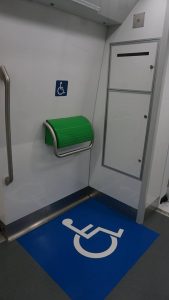

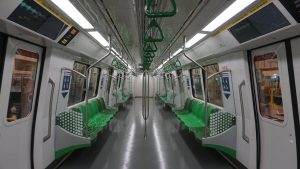


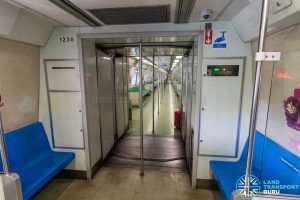
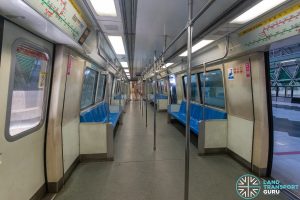

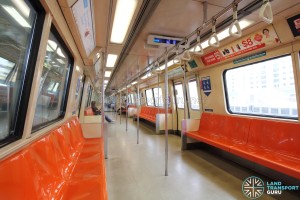
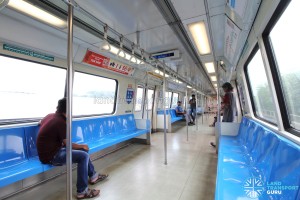
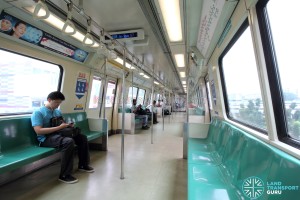
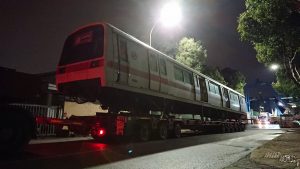

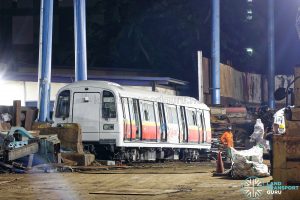
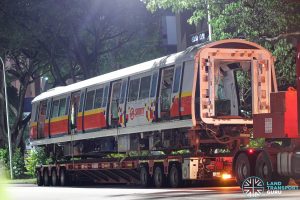
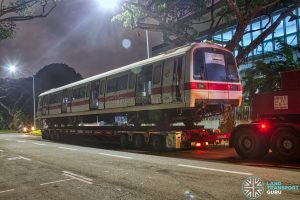
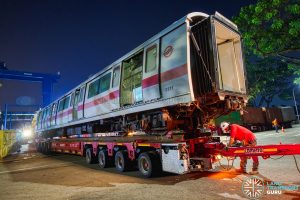


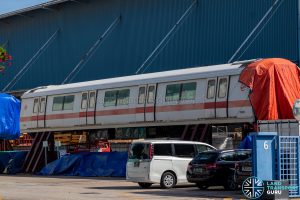
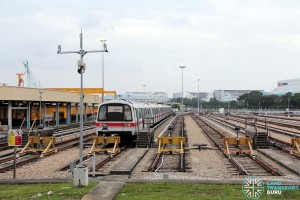
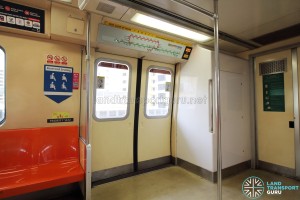

Where are the rest of the trains?
Often Seen: 237/238, 219/220, 235/236, 233/234
Scrapped: 217/218, 225/226, 211/212
Rarely Seen: 201/202, 203/204, 205/206, 207/208, 209/210, 213/214, 215/216, 221/222, 223/224, 227/228, 229/230, 231/232
All refurbished C651 trains have been scrapped with none of them preserved.
C651 trains 201/202-237/238.
As Of February 2019, There Are Currently 16 C651 Trains In Operation With 3 Trains Nowhere To Be Seen. However, C651 Is The ‘Only And The Longest’ Operational And Unrefurbished Generation Trains With 25 Years In Singapore. I am A Fan Of C651 Trains Since 2014.
3 trains not operating… Where are they huh?
And I was wondering what happen to the 1 that was refurbished…
They and C151 045/046 have been withdrawn.
I Always Take The C651 From Aljunied Because It Is Comfortable And Goes 40 Km/h While I Don’t Take The C151, C751B And C151A As They Go To Fast As 100 Km/h But Sometimes I Waited A Very Long Time For The C651 But Sometimes When I Took North South Line I Am Rushing And When I Took The Train It Has Always Been A Sharyo I Hate It As It Goes 90Km/h Like SBS9690A